Top 10 Most Corrupt Departments In India
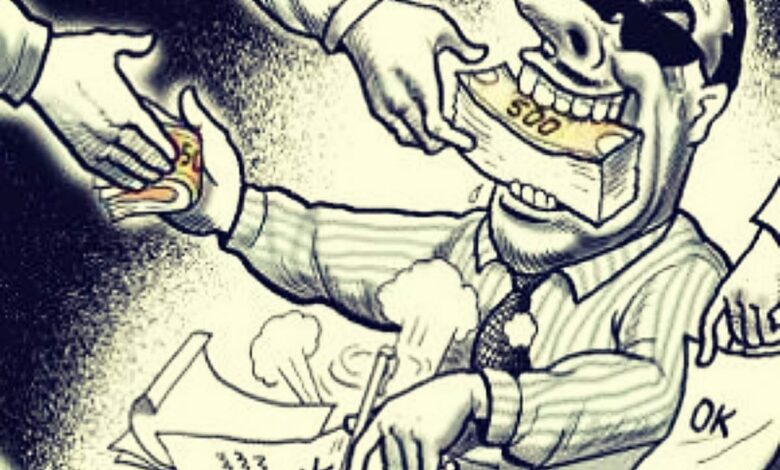
India and corruption have always been inextricably linked. It is not something that has been hidden or exited out of the public eye. It not only has an impact on and creates barriers to economic growth and development in other sectors, but it is also one of the primary reasons for power abuse. It’s no secret that corruption is a major problem in India. Despite some progress, India remains ranked 78th out of 108 countries on the Corruption Perception Index.
According to a survey conducted by Local Circles and Transparency International India, more than half of Indians pay bribes to state and local officials because “it was the only way to get work done.”
They gathered 190,000 responses at the national and state levels to determine the level of corruption experienced by ordinary citizens — and the situation does not appear to be improving.
People are dying of hunger simply because they lack basic necessities, resulting from corruption in India by powerful politicians, government officials, and various working sections of society. It has become a sort of general rule for the general public that if they want any of their work related to government functions to be processed or completed, they must pay a fee under the desk. This has also made the democratic system less efficient and faithful, leaving the public with no choice but to bribe or leave their work unfinished.
Misuse of assigned authority to generate black money
Though several sections in the Indian Constitution are designed to eliminate corruption through various means, basic implementation has yet to be completed successfully. Government officials and politicians are said to be the primary perpetrators of corruption in India.
Approvals and processes that must be completed at the government level for the general public are used to earn extra money and corrupt the system, even when those facilities are legally defined as free of charge. Politicians and government officials in positions of power use their abilities and resources to spread corruption and gain black money, even when they are already paid by the government or taxes paid by the same public.

Only a few things change when the general public decides and gathers confidence to stand up to those in positions of power. Instead of receiving justice immediately or within a few days, they are forced to linger here and there for years, and the case remains pending while the person is forced to navigate the loopholes.
One of the incidents that provide proof of the highest authority being involved in corruption was the case of the 2010 Commonwealth Games scandal, in which a scam of about 70 thousand crores was revealed, which was said to involve cabinet ministers and chief ministers at the time.
Here is the list of the Top 10 Corrupted Departments in India
1) Judiciary
Judiciary is the country’s supreme power on which a person has faith. Every single person, whether he/she is a minister or police or a superstar or a normal person, goes to court for an important decision. But there is a lot of corruption in this judiciary, the so-called “Supreme power” of this country. In our country, Judiciary is such a department that cannot verdict its judgment even if the case is a simple open and shut-down case. The 1984 Sikh riots case is still running now, and nobody knows when it will be over.
Also, our Judiciary system is so harassing for the common man who has committed small crimes such as fights, chaos, etc. that it takes years for the ultimate judgment to make, and the person has to suffer their whole life. Our Judiciary system is so corrupted and unfair that the person who hasn’t done any serious crime is imprisoned for more than 5 years, and the person who has committed serious crimes like rapes and murders is enjoying outside. Different celebrities and actors who have committed crimes throughout their lives first get bail and then the punishment, which is also not a serious one because they have power and money. This is the state of our judicial system.
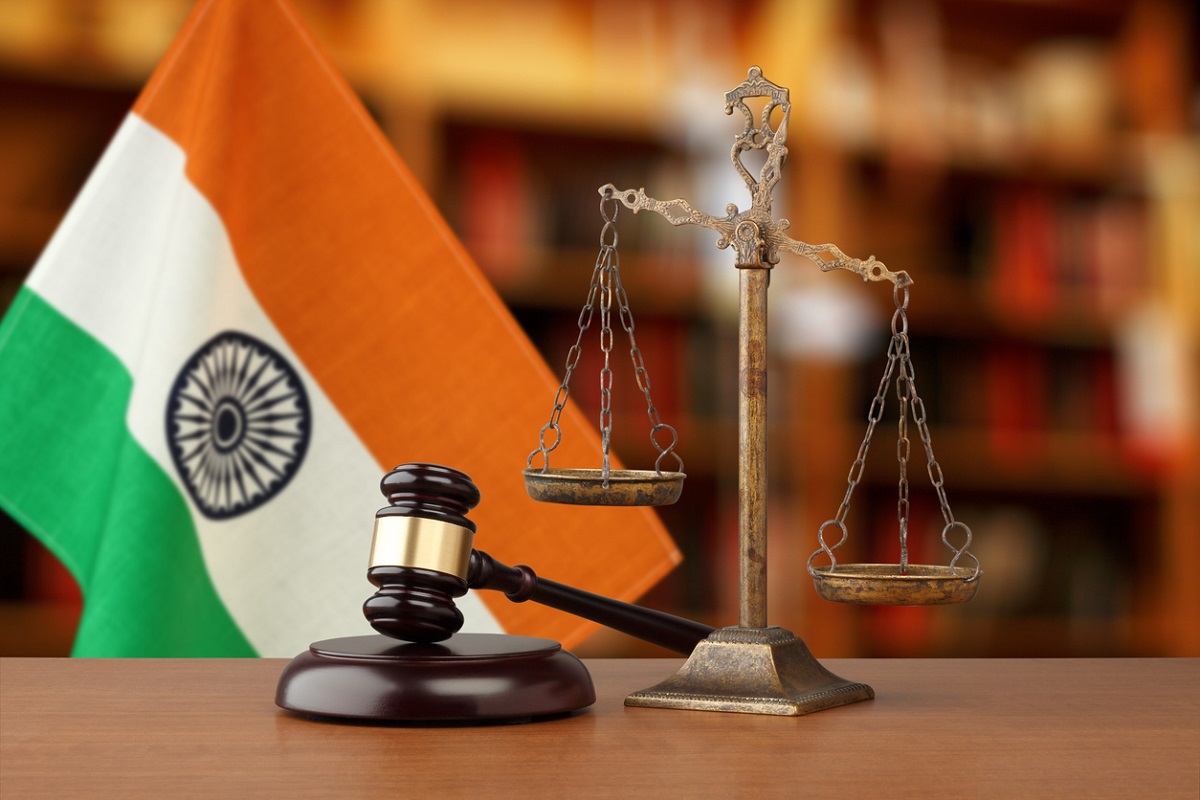
External assessments agree that over 75% of Indians believe the judiciary is corrupt. Corruption is not only prevalent in lower courts; some claim it even extends to the highest levels. A former Law Minister declared in 2010 that eight of sixteen former Chief Justices of India (CJI) were corrupt, and a former Supreme Court judge claimed in 2014 that three former CJIs made “improper compromises” to allow a corrupt High Court judge to continue in office. Unfortunately, the Indian judiciary has a tendency to interpret any call for greater judicial accountability from the executive or legislature as an attack on the judiciary’s independence.
That concern is not entirely unreasonable, given the brief history of power struggles among the three branches. Still, it is increasingly hollow in light of rising corruption reports in the judiciary ranks. In recent times the Amber Heard and Jonny Depp case was held in a court in the U.S.A, and it took 45 days for the conclusion of the judgment, but the funny thing is if the same case had been held in India, then it wouldn’t have been solved in 45 years also. In India, there are more than 5 crore cases are pending in which more than 80% of cases are 5 years older.
History of judges who were found corrupt
On the basis of his decision, Justice S.P Sinha of the Allahabad High Court was removed in 1949 under the Government Act 1935.
The Chief Justice of India granted the CBI permission to file a Disproportionate Income/Wealth case against Chief Justice of Madras High Court Justice K Veeraswami in 1979. (father-in-law of Mr. Justice V.Ramaswami).
On November 3, 2002, three Karnataka High Court judges and two female advocates became involved with a female resort guest. The police arrived, but no action was taken. N.S Veerabhadraiah v/s Gopalagowda and Chandrashekariah were the judges. The status of the case was as follows: a three-judge inquiry committee appointed by the Chief Justice of India filed its report, and a clean chit was issued.

In September 2009, Supreme Court lawyer Prashant Bhushan told Shona Chaudhary of Tehelka Magazine that half of the previous 19 Chief Justices were corrupt, drawing the apex court’s ire.
On September 17, 2010, former law minister Shanti Bhushan caused a stir in the Supreme Court by filing an application accusing eight former Chief Justices of corruption and daring the court to imprison him for contempt of court.
Reasons for Corruption in the Indian Judiciary
Inaccessibility: The judicial system is expensive, and the average person cannot afford it. Normally, people find it difficult to seek relief because litigation takes time, which is beyond the average person’s capabilities.
Difficult Impeachment Procedure: The Supreme Court of India has ruled that no first information report (FIR) is frequently filed against a judge, nor is a criminal investigation initiated without the approval of a Supreme Court judge. Once appointed, a Supreme Court judge or Supreme Court can only be removed through a complex impeachment process carried out by members of the Lok Sabha and, thus, the Rajya Sabha, India’s two houses of parliament.
When the Congress party was in power in the 1990s, a motion to impeach Justice V Ramaswami could not be passed by parliament because Congress members abstained from voting. There have been no other impeachment attempts in India.
Slow and time-consuming process: India’s system has the world’s largest backlog of pending cases, with up to 30 million pending cases. Over four million of them are Supreme Court cases, with 65,000 Supreme lawsuits. This figure is constantly rising, demonstrating the system’s shortcomings. It has always been discussed to increase the number of judges and create more courts, but implementation is usually either late or inadequate. Furthermore, most prisoners in India’s prisons are detainees awaiting trial due to the backlog. An example is the 2012 Delhi Nirbhaya case of rape. The case started in 2012 and ended in 2020. And the funniest thing is that it was held in a Fast Track court.
Act of contempt of court:
On top of all of this protection for the judiciary, there is the power of contempt of court, which has become a powerful weapon in suppressing public criticism or perhaps an honest assessment of the judiciary. While discouraging unjustified attacks on the judiciary, the Contempt of Courts Act has also stifled debate. As a result, the judiciary’s behavior is rarely discussed or debated in the media.
Transparency is lacking:
The lack of transparency in the Indian judiciary is a major issue. The Right to Information (RTI) Act is completely outside the purview of the Indian legal system. As a result, many issues such as the quality of justice and accountability, are not properly understood within the functioning of the judiciary.

Weak bar-to-bench relationship:
The harmony of the relationship between these two authorities is critical in the administration of justice; the standard of judicial decisions is dependent on the harmony of the relationship between these two authorities. Weak bar associations do not protect their client’s rights, and a weak judiciary does not deliver justice to society; therefore, the right harmony and balance between bar and bench is capable of combating corruption.
Weak governments:
There has always been a hidden conflict between governments and thus the judiciary; governments do not want a strong judiciary, and the judiciary has occasionally prevented governments from making unconstitutional decisions; this suggests that if governments become weaker, the likelihood of judicial corruption will increase.
The decline in nobility and ethical values:
Corruption is also increased as a result of changes in the value system and ethical qualities of men who administer. Morality, service, and honesty are considered outdated ideals.
Illiteracy and poverty:
The poor and illiterate men in India’s interaction with the judiciary results in his reaction that the courtroom is an alien land where procedures and technicalities rule over truth and morality. It’s difficult for the average person to push past the complicated procedures or the middleman who takes advantage of their ignorance to make money.
Why do people take bribes?
Favourable judgment: People pay and offer bribes in court because they believe they can secure a favorable judgment. According to media reports, it is possible in lower courts, but things drastically improve when it comes to the high courts.
Quick decision-making: There is a massive backlog of cases in Indian courts, which results in delayed judgments.’ It is not uncommon for a case to drag on for years. Bribes are frequently used to expedite the process.
Bail issues: When it comes to bail, the judge has a lot of leeways; the rules governing this are fairly simple. In some cases, it is possible to secure bail by influencing the judge.
Witness manipulation: Recent high-profile cases show that witnesses are bribed or coerced into giving favorable testimony.
To persuade public prosecutors: The general public prosecutor is the master of the case filed under the concept of F.I.R. or State cases. Bribing public prosecutors is one way to influence them.
International Judiciary Corruption: According to the global anti-corruption organization Transparency International, widespread bribery of judges and inappropriate political interference in legal systems deny millions of people their right to a fair and impartial trial or any trial at all.

2. IAS Lobby
In our country, the IAS lobby is the second most corrupt department because they have the power of administration in their hands, and they misuse them every single day. An IAS officer thinks of himself to be a king in the district where he’s posted. An IAS officer forgets that they are also a part of the system and don’t own it.
Everyone is filled with violence, greed, anger, and passion — but he lacks power, so he remains a saint. To be violent, you must be strong. You must be powerful in order to satisfy your greed. You must be powerful in order to satisfy your desires.
So when you gain power, all your sleeping dogs begin to bark. Power becomes a source of nourishment and an opportunity for you. Power does not corrupt you; you are corrupted. Power only brings your corruption to light. You wanted to kill someone but lacked the power to do so; however, if you have the power, you will kill.
Power does not corrupt you because corruption is something you carry within yourself; power simply allows you to do whatever you want.
Power in a man’s hands, like Gautam Buddha, will not corrupt; rather, it will aid humanity in raising its consciousness. In this case, an IAS thinks himself to be supreme, and so he chooses the path of corruption to fulfill his dreams and desires, which is, unfortunately, the wrong path in life.
There are many cases filed in court against the IAS lobby. Jitendra Singh informed Parliament in 2021 that 581 complaints of corruption were filed against IAS officers in the current fiscal year.
The government was questioned about data on departmental complaints and cases filed against Indian Administrative Service (IAS) and Indian Police Service (IPS) officers in the previous five years.
The Minister of State for Personnel submitted a written reply to the Lok Sabha, stating that 753 complaints were received against IAS officers in 2019-20, up from 643 in 2018-19.
In addition, he stated that 623 complaints were received against IAS officers in 2017-18, 484 in 2016-17, and 380 in 2015-16.
Singh stated that the CBI registered 44 cases against IAS officers and 12 cases against IPS officers between 2016 and 2021.
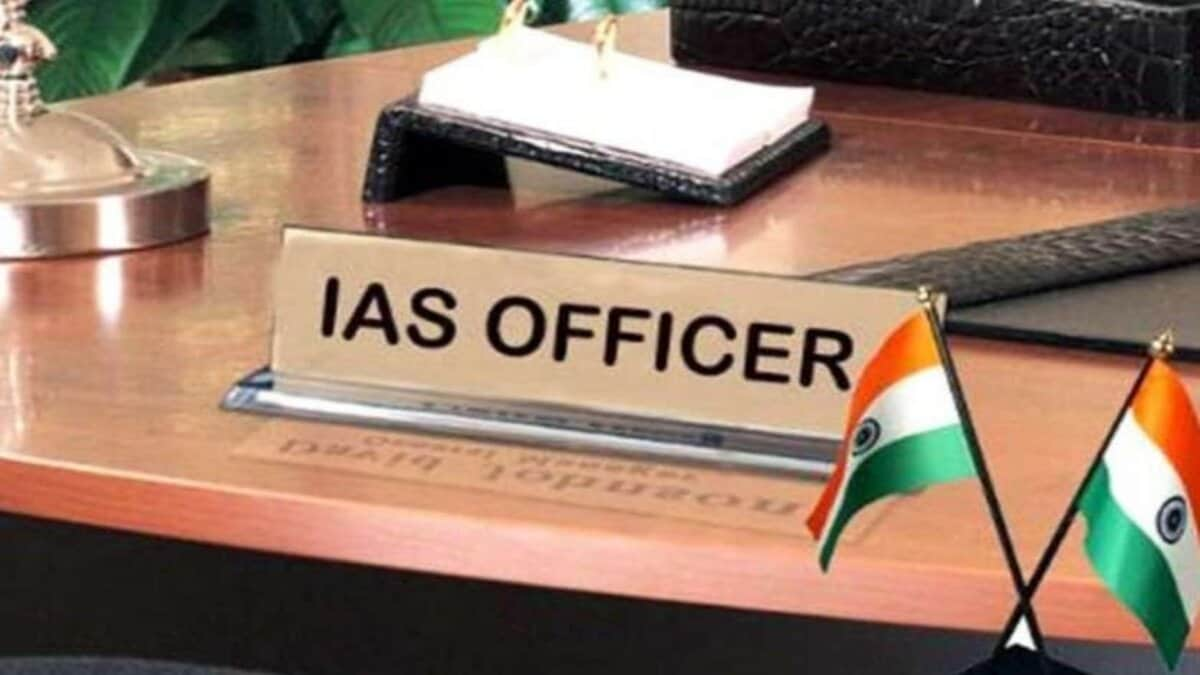
According to Singh, data on the number of complaints filed by IAS officers is not kept centrally. According to the AIS Rules, 1969, if the officer was serving under the State Government at the time of the misconduct, the State Government is the authority competent to take departmental action against an IAS/IPS. If the officer was serving under the Central Government at the time of the misconduct, action is taken against him by the concerned cadre controlling authorities, namely the Ministry of Home Affairs for IPS and the Department of Personnel and Training for IAS, according to the statement.
Most of the corruption done in our country is mainly done by the IAS lobby. And they always attack in groups so that the corruption can be done in a swift manner.
Some examples of top corrupt officers in India-
Malaichamy– A 72-year-old former MD of Khadi Gram Udyog was sentenced to five years in prison and fined Rs. 10 lakh in December 2012 by a Delhi court for possessing disproportionate assets worth more than Rs. 52 lakh. He was a 1971 batch IAS officer (AGMUT Cadre) who had also served as Delhi’s Chief Electoral Officer. According to the CBI, after becoming an IAS officer in 1971, the value of his assets increased from Rs. 46 lakh to Rs. 1.3 crore, which was highly disproportionate to his known source of income.
Nitesh Janardhan Thakur- Sleuths from the Anti-Corruption Bureau raided his Duplex flat in Mumbai. It was discovered that he had more than Rs. 200 crores in property and cash within 12 years of his service. In addition to real estate, he owns ten luxury vehicles, including Land Rover, Mercedes, and BMW. He tampered with the land records while Collector of Alibaug. He was suspended as a result.
Nitesh and his wife have been accused of establishing several shell companies while still employed and investing Rs. 300 crores in them. Based on a complaint, the DCB CID Crime Branch of Mumbai filed an FIR against Nitish Thakur and others, charging them with forgery, cheating, and extortion under Sections 387, 467, 471, and 420 of the Indian Penal Code (IPC). Nitish Thakur fled abroad before the ED launched an investigation and is currently believed to be in Dubai.
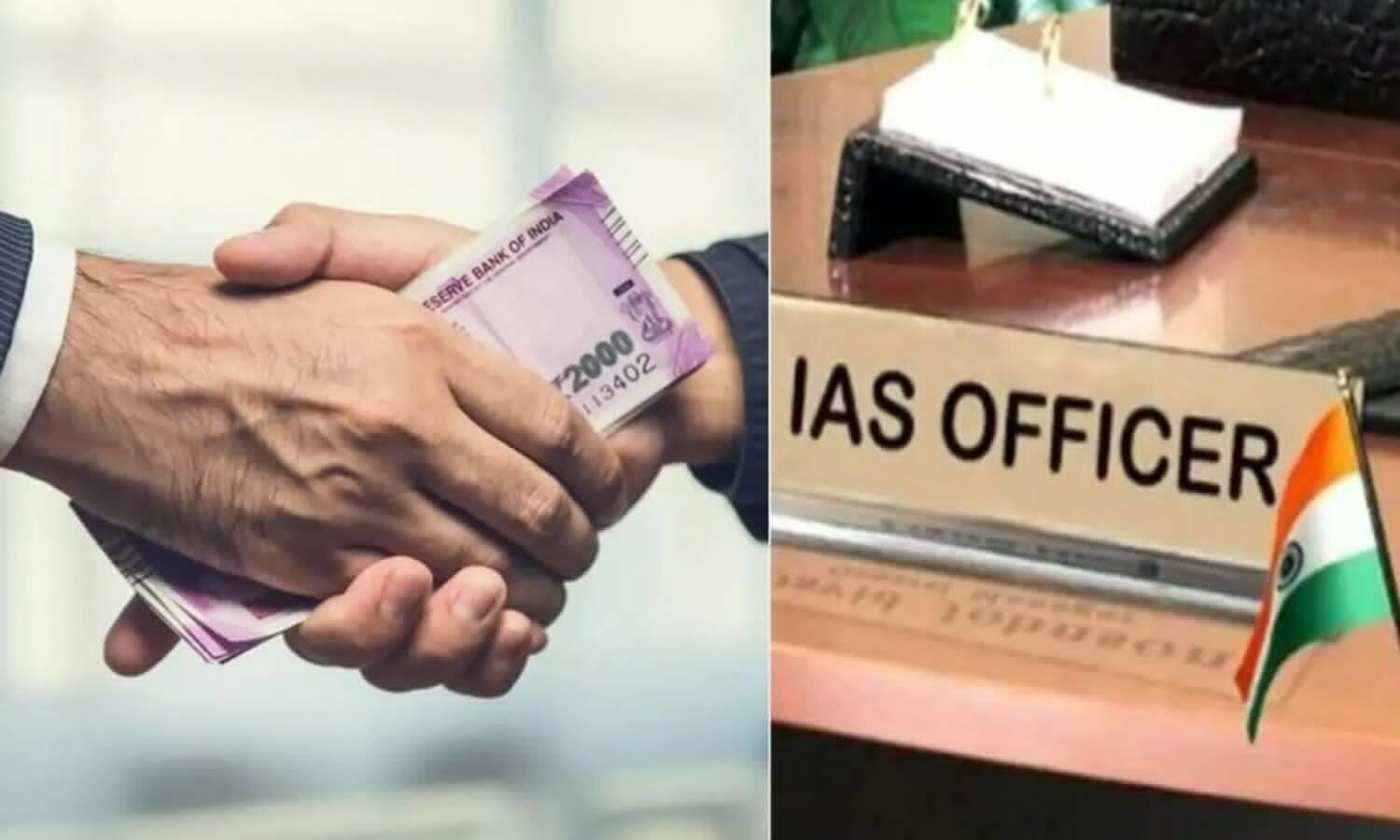
Arvind and Tinoo Joshi- This 1971 batch IAS couple was fired for amassing disproportionate assets. These two were born the same year, received their MBA from an Australian university, were selected for the elite Indian Administrative Services the same year, and were assigned to the same cadre. However, the couple is currently serving time in prison. Tinoo Joshi attempted to obtain bail on medical grounds after surrendering in September 2015, but the court denied her request.
Babulal Agrawal- In 2010, the Chhattisgarh government suspended Babulal Agrawal, a 1998 batch IAS officer serving as the State Agriculture Secretary. During IT raids, it was discovered that his total assets had been overstated to more than Rs. 500 crores. He had Rs. 40 crores in his 446 Benami bank accounts. He also had 16 shell companies that he used for hawala transactions. The Enforcement Directorate attached his properties after a thorough investigation.
Subhash Ahluwalia– Subhash Ahluwalia, a senior IAS officer from Himachal Pradesh, served as Chief Minister Virbhadra Singh’s Principal Private Secretary. The Vigilance Bureau questioned him and his wife (a college principal) on suspicion of amassing disproportionate assets. The Anti-Corruption Bureau later suspended them from service and arrested them. After some time, however, the Congress Government cleared him of departmental investigations and re-instated him.
3) ED, CBI & IB
The ED, CBI, and IB are India’s third most corrupt departments. They are the puppets in the hand of the ruling party as they have a greed for money. Recently, no ED or CBI have raided single ruling party houses or offices as they are their so-called servants who wag their tails when said. They just raid the opponents of the ruling party for money.
ED and CBI are Constitutionally Established Organizations, so they shouldn’t come under the influence or pressure of any political leader but is this happening? A big NO. The ED and CBI are so much corrupt that if you give them money, there will be no investigations, and if you don’t, you have to face the consequences.
An example of an ED corruption case
The Central Bureau of Investigation (CBI) has arrested an Enforcement Directorate official on suspicion of extorting 5 lakh from a businessman in connection with an instant mobile app loan case. Other unknown officials are also being investigated.
The ED’s Bengaluru division had been conducting a money laundering investigation into the loan case referred by the Hyderabad police’s Cyber Crime unit. Manoj Mittal, the agency’s deputy director, was in charge of the investigation, and enforcement officer Lalit Bazad was assisting him.
Mr. Bazad allegedly emailed one summons to Mikhil Innani, the managing director of Mumbai-based Apollo Finvest, on February 5, 2021, requesting that he appear on February 9. Mr. Mittal, on the other hand, signed the summons.
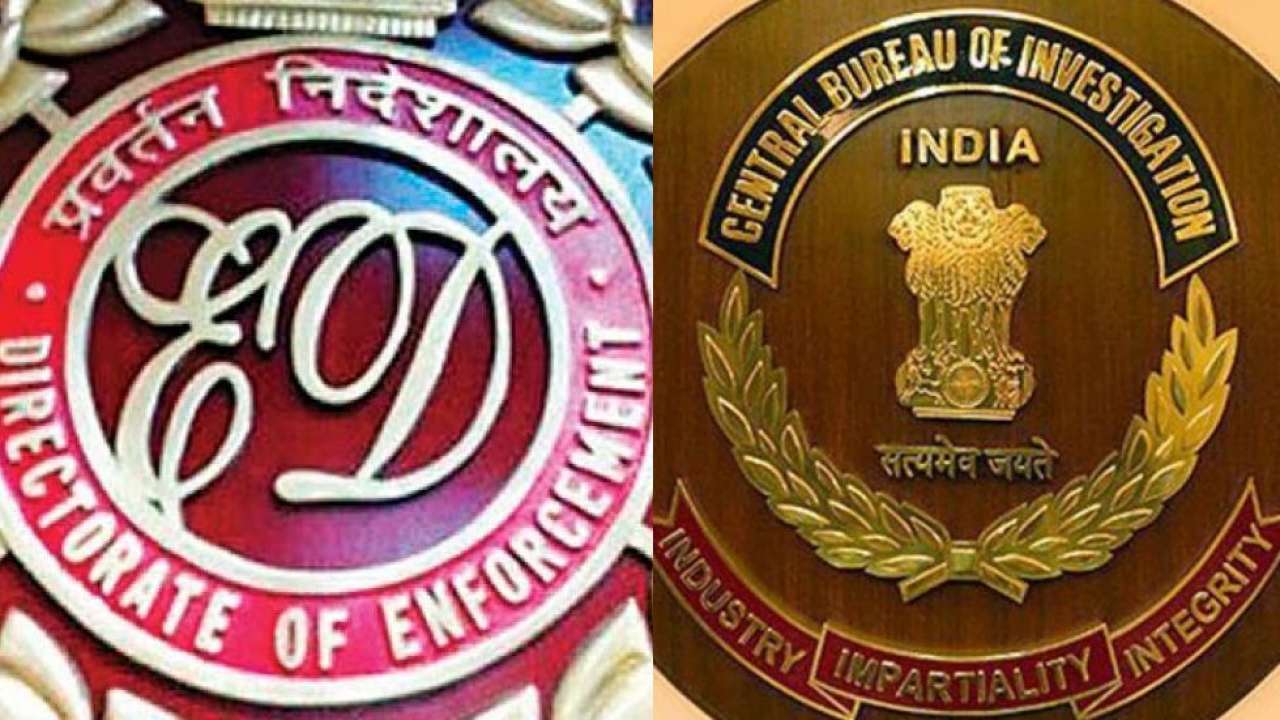
According to the CBI, Mr. Innani went to the ED’s Bengaluru office on February 9 with his wife and a cousin. In the evening, they flew back to Mumbai. Mr. Bazad allegedly then contacted Mr. Innani via WhatsApp and demanded 5 lakh to de-freeze the company’s bank account, which had been frozen by the ED. He was instructed to arrange the funds the same day.
Mr. Bazad went to a pub in Bengaluru and used a waiter’s phone to call the businessman again. He shared his location via WhatsApp, after which Manvender Bhati delivered a packet containing cash to a parking lot employee at the pub. He allegedly kept the packet in the Enforcement Officer’s vehicle.
According to the agency, the money was arranged by a relative of Mr. Innani and delivered by Mr. Bhati on the orders of another businessman, Rajendra Jain.
On February 16, the company’s bank account was unfrozen. Mr. Bazad used the threat of freezing the accounts and false implications in the case to demand illegal gratification, according to the CBI.
An example of the CBI corruption case
CBI VS CBI
The Central Bureau of Investigation (CBI) had an embarrassing day in a Delhi court when two of its officers engaged in an open court verbal duel. Rakesh Asthana, the former CBI special director, accused of corruption, was on trial in the special CBI court.
During the hearing, the current and former investigating officers (IOs) in this case both spared and accused each other of being too soft on Rakesh Asthana.
Former IO AK Bassi claimed there was proper evidence against Rakesh Asthana, but current IO Satish Dagar claimed he was “trying to save” him and others.
Because they work for the same company, Special CBI Judge Sanjiv Aggarwal ordered Bassi and Dagar not to talk dirty in public.
The hearing on taking cognizance of the CBI bribery case was then adjourned. The court has summoned AK Bassi to answer questions about the initial investigation into the CBI bribery case.
The charge sheet was filed on February 11, 2020, with only “middleman” Manoj Prasad named as an accused.
Former CBI Special Director Rakesh Asthana (the agency’s second-highest ranking officer at the time) is listed as a “person under investigation” in column 12 of the charge sheet. However, no evidence has been found against him as of yet.
In his testimony before the special CBI court, AK Bassi alleged that suspended DSP Devender Kumar and current IO Satish Dagar “deliberately ignored” evidence against Rakesh Asthana.
The new IO has given Rakesh Asthana a clean bill of health from the start. The affidavit filed before the Supreme Court contained clinching evidence, but it was ignored, “AK Bassi informed the court.
“He (Dagar) didn’t even seize Devender Kumar’s phone and other electronic evidence,” Bassi said, accusing Satish Dagar of conducting a “biased investigation.”
AK Bassi also told the court that Manoj Prasad (the “middleman”) was arrested on October 16, 2018, and began claiming links to senior CBI officer Satish Sana, who was arrested in connection with the Moin Qureshi money laundering case, had also claimed links to senior CBI and RAW officials.
AK Bassi stated that DSP Devender Kumar, who was investigating the case, “showed that he had recorded a statement by Satish Sana naming former CBI chief Alok Verma on a day when Sana wasn’t even there in Delhi.”
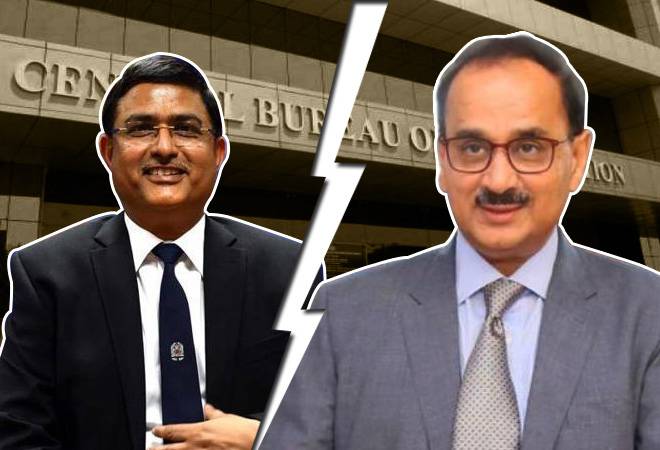
Meanwhile, the current Investigating Officer Satish Dagar retaliated against AK Bassi, claiming that Bassi was removed from the case due to his “biased investigation.”
“Nothing has been discovered in the case files, as Bassi claims. He was accused of conducting a biased investigation, “Satish Dagar stated in court.
Dagar, the current IO in the case, told the court that telephonic conversations between co-accused were recorded and submitted to the Supreme Court.
The court has also asked the CBI how long it will take to complete the investigation into the Moin Qureshi case, which is linked to the entire CBI bribery case.
Dagar informed the court that the CBI bribery case was still open and that the agency was awaiting responses to letters sent to the United States. The agency has also requested two weeks to continue its investigation.
On February 12, 2020, the court expressed displeasure with the CBI’s investigation into the case, questioning why the accused with larger roles were free while the investigation agency had arrested its deputy superintendent of police.
The CBI filed the case against Asthana after receiving a complaint from Hyderabad-based businessman Satish Sana. He is being investigated in connection with a 2017 case involving meat exporter Moin Qureshi.
4) Defense Forces
The fourth corrupt department on the list is our Defense Forces. We think of them as Gods as they protect our country from different calamities and terrorist attacks. But it’s not always what we think. They are corrupted too. They sell the defense weapons provided to them outside the country for money. They also send sensitive information about the country outside of greed for money. For them, money comes first, then the country. They have become the main terrorist in the country.
They also buy the products from the defense canteen and sell them outside at a higher price to the common people for money. They get the grocery, entertainment, or any product at a low price as they don’t have to pay taxes charged on them. But what are they doing? They take more products from the canteen and just sell them for the greed of money.

Not only this, the defense forces are getting into the Honey-Trap: A scheme in which an attractive person persuades another person to reveal information or do something foolish.
An Example of a Honey-Trap Case
Shantimay Rana, 24, an Indian Army jawan, was arrested for allegedly leaking military information to Pakistan. A Pakistani woman allegedly honey-trapped him for leaking information about the Indian Army.
The jawan was apprehended after a case was filed under the Official Secrets Act of 1923. Shantimay Rana is from the village of Kanchanpur in West Bengal’s Bagunda district. He was assigned to the Jaipur Artery Unit.
“Pakistani agents Gurnaur Kaur alias Ankita and Nisha had contacted the jawan through social media,” said Umesh Mishra, Director General of Rajasthan Police’s Intelligence Wing.
According to the Intelligence Wing, two women later took Rana’s phone number. They used to communicate with Rana via WhatsApp. Both gained Rana’s trust before she began stealing intelligence information from him. In exchange, money was transferred to Rana’s account.

Rana stated that he has been in the Indian Army since March 2018 and has been in contact with the female Pakistani agent for a long time via WhatsApp chat, video, and audio messages. The woman identified herself as a Shahjahanpur resident (Uttar Pradesh). Rana learned from the woman that she worked in the Military Engineering Services. Nisha was the name given by the other woman. She stated that she is a member of the Military Nursing Service.
Rana had been asked by the woman for confidential documents, photographs, and videos of maneuvers. Rana had also sent secret documents from his regiment as well as videos of the exercises in his greed.
5) Department of Land Resources & Rural Development
It is the fifth most corrupt department in our country. It has been documented several times that government officials in the land and property sectors confiscate and steal state and individual property. This is most common in rural areas where people lack knowledge or feel weak and helpless in the presence of powerful people such as government officials.
Such officials are even said to assist the Mafia in attempting to seize the property of innocent people by providing them with legal paperwork and other assistance that they may require in exchange for some money for monetary assets. They also sell the lands of the government to private departments.
They also acquire the land of someone else through illegal methods. And there is a lot of corruption in the land revenue department. Any type of land with a large value is registered with a low value by them. The land of government or land of any department is being purchased by them.
‘Abuse of discretion’ could easily apply to the land issue because land administration and management fall under the purview of government authority (although cooperation with the private sector and civil parties are common). Formal decisions are required to register a property, grant a mortgage, impose or remove restrictions, and allocate a specific land use, all of which imply discretionary powers of the public sector.
‘Nepotism, Favoritism, and Clientelism’ could easily apply to the land issue, as access to land is often dependent on kinship, particularly under customary law.
According to the India Corruption Study, 79% of those interacting with the Land Administration Department in the country agreed that the department is corrupt. Only 5% of respondents believed that the department was free of corruption.
More than 36% of those who paid bribes paid money to department officials, while 33% paid money to middlemen such as document writers, property dealers, and so on to get their work done. Bribes were paid for work that included 39% property registration, 25% mutation, 12% land survey, and 4% obtaining property documents.
Corruption appears to exist in the land sector as it does in any other sector, for example:
Bribery is a form of corruption (abuse of discretion because of payments by third parties).
Corruption appears to exist in the registration of property rights, registration of change of title, acquisition of land information, cadastral land survey, and land use planning. The demolition of the Twin Towers in Noida is an example of this case.

− Fraud (abuse of discretion for personal gain without third-party involvement). It appears that land sales and dealing in plantation shares, among other things, are not free of corruption.
– Favoritism, Nepotism, and Clientelism (abuse of discretion for the benefit of family, friends, etc.). It appears that granting such property rights to land owned by others (including the State) is corrupt.
6) Municipal Council & Police Department
It is the sixth most corrupt department in our country. The police department is the most corrupt department as they take bribes for each and every ruling break. They take bribes openly. If you break some traffic rules and give them some money, they will immediately release you. They will immediately shut your case if you commit a crime and give them a bribe.
In most cases where there is a serious crime like murder and rape, the police officers take the money and circulate the case in such a manner that the case automatically shuts down or comes to an end. If you give them money, it will be in your pocket.
The municipal corporation of India is intended and designed to look after the welfare of several districts that are divided into several subcategories. They are in charge of the facilities such as hospitals, dispensaries, proper water supply, and drainage systems that are present in the area under their jurisdiction.
Despite all of the public support, they have been found to be involved in approximately 13 to 14% of the bribe cases involving this particular department. There have been several instances where individuals have come forward to claim that the MCD was not meeting their basic needs and requirements unless they paid for them, which was completely illegal and unethical on their part.
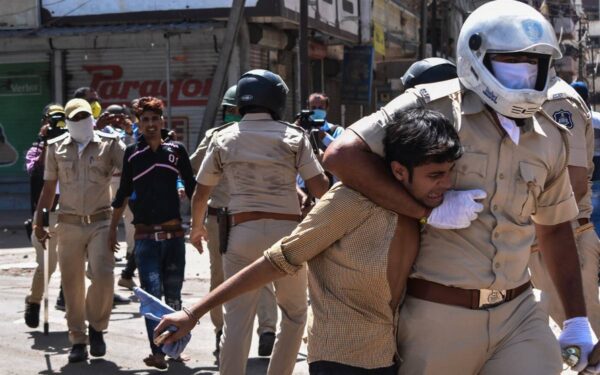
There have been reports of police corruption, including beating and stealing money from poor people such as rickshaw pullers, peddlers, hawkers, and laborers. There are also instances where police officials take ‘Hafta’ (a fixed weekly amount of money) from shopkeepers in order to allow their illegal shops to operate or to allow them to encroach on the public footpath, causing problems for the general public. These are all common sources of corruption in which police officers regularly engage.
As a police officer’s rank rises, so does the amount of bribery he or she requests because the need and greed grow in tandem. According to anti-corruption bureau reports, police officers were the most corrupt of all public servants in Maharashtra during the lockdown period. In one of the major cases in Thane, a sub-divisional police officer demanded a bribe of Rs. 12.5 lacs. According to reports, the initial bribe demanded was Rs. 50 lacs, which the complainant bargained down to 12.5 lacs.
Such incidents and instances are common practices for corrupt police officers. Unfortunately, the majority of cases go unnoticed or unreported. Still, those for which corruption charges are filed fall under the purview of the Prevention of Corruption Act, 1988. The procedures and formalities outlined in this act are followed to prosecute the corrupt official.
Examples of Corruption in police Department
The Hon’ble Supreme Court stated in Lalita Kumari vs. Govt. of 2 of 19 U.P.and others (2013) that police officers have a duty to register a case that is brought to them. Several times, police officers stationed at the police station failed to register the victim’s case in the form of an FIR due to bribes received in exchange, thereby promoting corrupt practices. It has also been observed that these police officers may sometimes deliberately and systematically participate in organized crime themselves.

Also another example was on January 1, 2019, a police inspector named Anand Bhoir, who was then attached to the crime branch, was arrested for allegedly accepting Rs 22 lakh from a liquor shop owner in Fort named Ashok Patel.
7) Tax department
It is the seventh most corrupt department in India. The tax that the common people pay for the betterment of India as a whole, which includes infrastructure, transportation, water facilities, and every other facility, is somehow used for the officials’ benefit without being mentioned in any official report, which keeps such matters out of the sight of RTI and leads to a corrupt government and department.
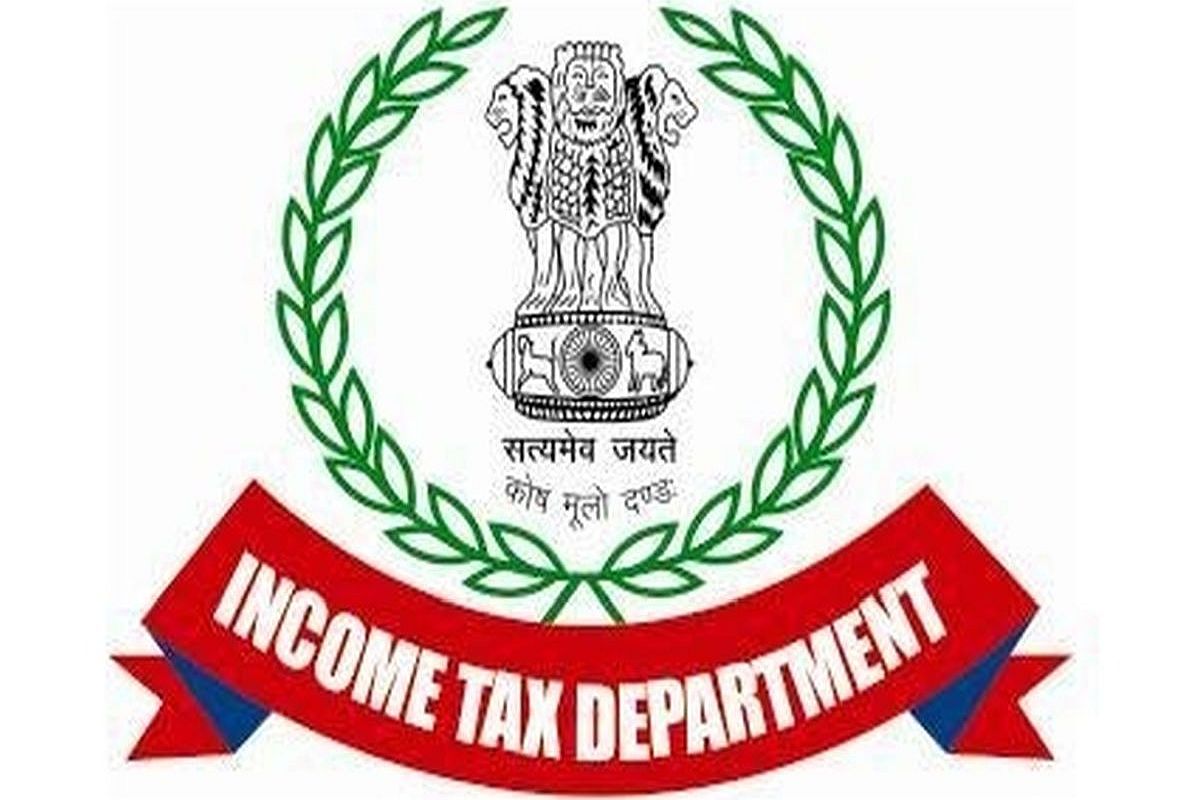
There have been instances where large corporations and owners attempted to avoid paying a percentage of tax by bribing tax department officials. It has also been reported and observed that several government officials fail to pay the appropriate amount of tax that is legally determined for them. If you bribe them, they will not raid your house or office, but if you don’t, then you have to suffer severely.
Example of corruption in Tax Department
The Central Bureau of Investigation (CBI) arrested four people in two separate bribery cases on July 3, 2022.
For the exchange of a bribe of Rs 60,000, the federal agents arrested two people working as tax assistants at the Income-Tax departments in Hyderabad (Telangana) and Visakhapatnam (Andhra Pradesh).
According to a CBI official statement, a case was registered against a Senior Tax Assistant working in the office of the Additional Commissioner of Income-Tax (CIT) in Hyderabad and another Senior Tax Assistant of the Income Tax Department in Visakhapatnam on the allegation that they conspired and demanded Rs 1 lakh from the complainant in connection with a Tax Deducted at Source (TDS) certificate related to the complainant.
The complainant also claimed that after negotiating, the accused reduced his demand and ordered him to pay Rs 60,000.
In response to the complaint, the CBI set up a trap and caught the Senior Tax Assistant of the Income Department, Hyderabad, red-handed while demanding and accepting his share of the Rs 40,000 bribe from the complainant.
The other accused’s share, it is alleged, was paid for online at his request. He was also apprehended. Searches were conducted at the accused’s homes in Hyderabad and Visakhapatnam, “it was added.
One Agriculture Field Officer (AFO), a State Bank of India (SBI), Nowrozabad branch, District Umariya in Madhya Pradesh, and a private individual were detained by the CBI in another case for a sum of Rs 10,000 bribery,” the statement continued.

A case was opened against a private individual, according to the CBI. The accused allegedly demanded and attempted to obtain a bribe of Rs 10,000 from the complainant on behalf of the Agriculture Field Officer of the State Bank of India in Nowrozabad, District Umariya (MP), in exchange for a loan of Rs 5 lakh being sanctioned and disbursed.
The CBI set a trap and apprehended the accused private person while accepting a Rs 10,000 bribe from the complainant. Later, the SBI’s AFO was caught accepting the bribe from the accused private person.
Searches were carried out on the accused’s premises. The next day, all of the arrested suspects were brought before the appropriate courts.
8) Jail & Prison
It is the eighth most corrupt department on our list. In our country, it is thought that jail is the place where a criminal is kept so that he/she becomes a saint. But unfortunately, it is not what it looks like. The jail is the main hub of corruption and crime. If you give the jail staff money, they will provide you with everything you wish for.
Prison staff corruption, as well as its less aggressive corollary, guard corruption, is common in prisons around the world. Given the significant power, guards wield over inmates, these issues are predictable; however, the low salaries that guards generally pay exacerbate the situation.
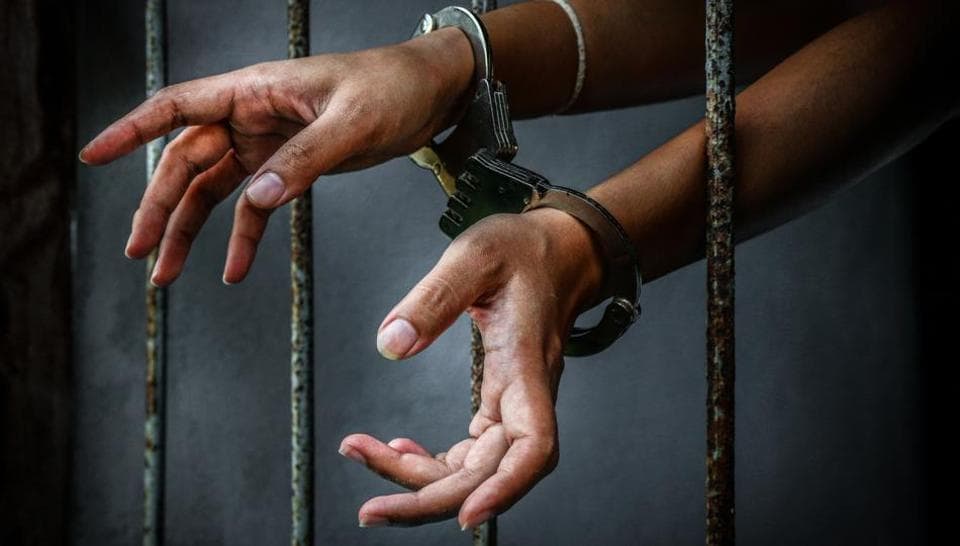
Inmates supplement guards’ salaries with bribes in exchange for contraband or special treatment. They are so much corrupt that they even take the money of the government given to them and plus the prisoners too who work hard in jails.
Example of Corruption in Jail and Prison
On 25th September 2019, The anti-corruption bureau (ACB) investigation into the bribery racket revealed that many “well-to-do” inmates in a jail in Rajasthan’s Ajmer were not only provided with prohibited but also received special treatment inside the barracks.
According to an unnamed senior ACB official, every barrack in Ajmer Central Jail had a room where inmates were given these “VIP facilities.”
We learned during the investigation that there was a VIP room for prisoners with a solid financial foundation between barrack numbers 1 and 15. These rooms were marked with chalk. The official said, “These inmates were given various amenities like a clean room, special food, clean clothes, and so on. The official claimed that the inmates paid Rs 8 lakh in rent each month for these VIP rooms. The staff in jail used to work as middlemen to provide the facilities. Some of the family members used to give cash, while others used to pay online.
We’ve written to several banks to request the accused in the racket’s bank statement. So far, 18 bank accounts have been frozen.
Another senior ACB official, speaking on the condition of anonymity, stated that the relatives also paid for various products such as tobacco and cigarettes. Packets of cigarettes were provided, which cost from Rs 12,000 to Rs 15,000. Packets of tobacco were also provided.
In July 2019, the ACB busted a bribery ring operating to facilitate services to jail inmates. In connection with the racket, 12 people have been arrested so far. They include four jail employees, two prisoners, and two prisoners’ relatives.

The arrest last week of four men, including a former jailor and three middlemen, revealed that the bribery racket involved monthly payments of Rs 25 lakh. Since the racket was exposed in July, ACB has been looking into two jailors.
Jaswant Singh, the jailor, and three middlemen—Rajendra Choudhary, Anil Choudhary, and Sita Ram—were among those arrested. Another middleman was apprehended on Friday.
The middlemen used to collect money on Jaswant Singh’s behalf from inmates’ relatives and family members in exchange for providing them with various prohibited products and services inside the jail.
ACB officials stated that the staff of other jails is also being investigated for similar complaints. According to them, the investigation is still ongoing.
9) Health Department
It is number nine on our list of the most corrupt departments in India. While the health sector should be regarded as a boon to society, it has also become a major source of corruption in India. Doctors who have been referred to and revered as gods by their patients are now failing to uphold their ethics by charging exorbitant fees for resources and treatments that should be provided free of charge under government schemes and rules.
It has also been observed that medicines and treatments are frequently faked to instill fear in patients’ minds or lower prices to profit from the same. One of the schemes that failed to provide relief to the general public and instead turned out to be a big corruption scam was the National rural health mission program, which also had the indulgence of several top authority government officials who were later arrested. In contrast, others managed to flee or die during the process.
In the healthcare sector, there are two types of corruption: petty corruption and grand corruption.
Petty corruption refers to corruption on a small scale or at a low level. It refers to relatively small sums paid in exchange for either free or subsidized services. While these sums may appear small on their own, they add up to a significant burden because they are typically demanded by the poor. People commonly encounter the following types of petty corruption in the health sector:
- Bribes to gain entry (to wards, to enter restricted areas such as labor wards),
- Bribes to skip lines (out-patient department, laboratory sampling),
- Bribery to obtain free services (for X-rays, medicines, diet supplements),
- Bribes for hospital admission or discharge or for the release of bodies from the morgue
- Bribes obtain medical certificates such as fitness certificates, disability certificates, and so on, which are required for a variety of purposes such as foreign travel, professional recruitment, and so on.
- Such bribes are typically collected by medical staff, and doctors may not be directly involved except in the case of the issuance of medical certificates.
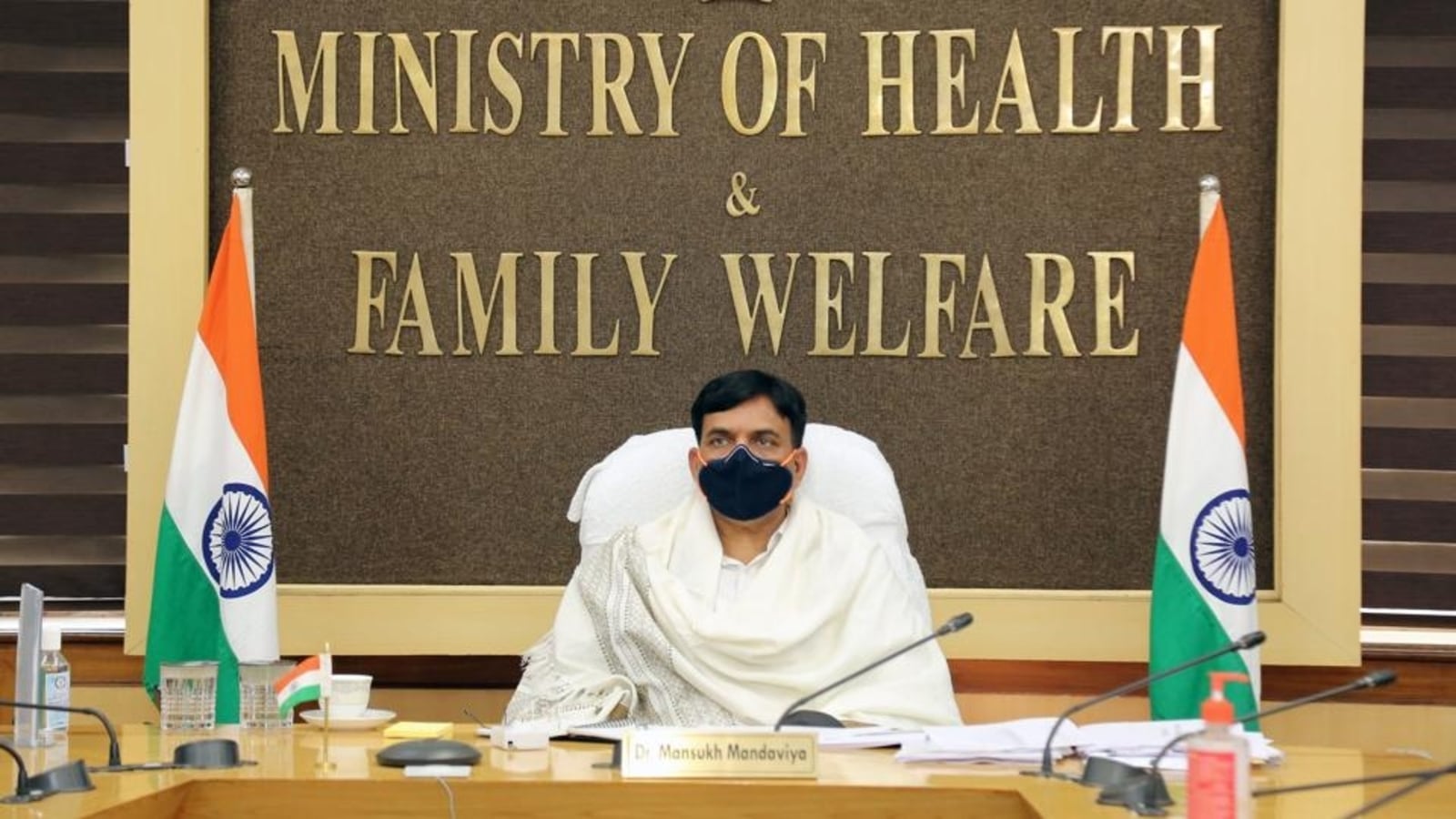
Grand Corruption refers to large-scale corruption, which frequently involves a group of officials, doctors, private-sector agents, and politicians. The following are examples of grand corruption in the health sector:
- Corruption in procurement (to win tenders for the supply of pharmaceuticals, medical equipment, hospital supplies, civil construction, or repair contracts). Over-invoicing, supply of substandard equipment, supplies, etc., sometimes having a shorter life span or shelf life in the case of medicines, and over-supply of some items in excess of requirements can all result from this. When cheaper generic (and equally effective) products are available, this may result in an excessive preference for one of the other brands of a drug.
- Corruption in postings and transfers of doctors and other personnel to ‘profitable’ positions (where they have access to better private practice, more openings for diversion of medicines, or cultivation of influence).
- Following the inspection, there was corruption in facility certification and the provision of mandatory recognition of departments and medical colleges.
- Corruption in medical college admissions, examination marking, and passing students, particularly in specialty and super-specialty post-graduate courses.
Petty corruption and grand corruption can coexist. Profits from bribes taken at lower levels are typically shared up the ladder through ‘pre-paid’ arrangements – a lump sum payment to secure a lucrative posting and regular monthly payments, collected from below, channeled upwards with a cut for everyone involved. Newspapers typically cover only large-scale instances of corruption. On the other hand, petty corruption has long been a part of, or rather, a way of life in many parts of the world.
Example of Corruption in Health Department
On October 23, 2013, the Supreme Court of India issued a landmark decision holding three doctors responsible for Anuradha Saha’s death in a prestigious Kolkata hospital 15 years ago and awarding a record compensation of Rs. 11 crores. The verdict was hailed as a potential watershed moment in Indian medico-legal history, and it shook the medical establishment, including the Indian Medical Association (IMA) and other medical organizations.
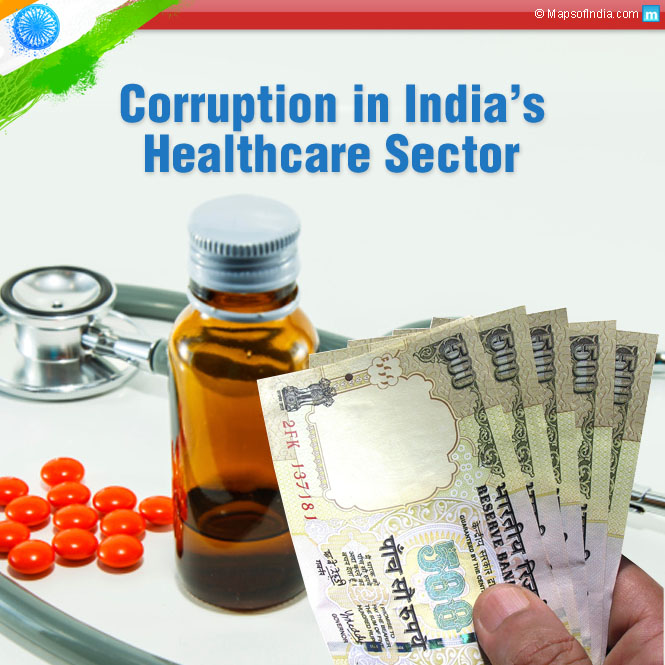
10) Education Department
It’s the tenth corrupted department in India on our list. Corruption has infiltrated the educational system. Modern educational institutions place a greater emphasis on money and materialism than on the concept of total human development.
Privatization of education, teacher appointments, posting, transfer, and stay at a choice place, teachers absenteeism from classes and up-down, private tutoring, midday meal, admission process, examination process-cheating, unfair means act, practical examinations, result, an affiliation of the institute, student scholarship, fellowship, purchasing and maintenances in institutes, and many other important means through which corruption grips the Indian education system.
Example of Corruption in the Education Department
After the president of the Registered Unaided Private School Association (RUPSA) in Karnataka, Lokesh Talikatte, leveled serious corruption allegations against school education department officials in a letter to Prime Minister Narendra Modi, Education Minister BC Nagesh ordered an investigation into those allegations on Monday.
In a letter to the commissioner of public instruction, Nagesh requested an investigation and the relevant files after obtaining proper documents and evidence.
Meanwhile, Talikatte has been summoned to appear before the Department of Public Instruction on Thursday to present documents and evidence related to the corruption charges leveled against education officials.
Talikatte is also preparing to approach the Karnataka Lokayukta with documents and evidence against 30 officials in the education department, ranging from block education officers (BEOs) to secretariat level officers, who allegedly demanded ‘bribes’ and ‘commission’ from private schools.
Previously, the education minister stated that he would file a defamation suit against Talikatte for “baseless” allegations leveled against him and the education department that lacked proper documentation. Nagesh also claimed Talikatte was acting on behalf of a “political party” and that his actions were not a “gimmick.”
A day after Talikatte accused the education department of corruption, board of education (BEO) and deputy director of public instruction (DDPI) officials conducted inspections in six of his schools across the state, citing contraventions of the Karnataka Education Act, the state. Talikatte complained that the department had raided her schools rather than taking action against the officials. This is merely a political witch hunt. Teachers and school administration officials have recently been tortured, depriving students of an education.”
Special Mention- Politics
It’s our special mention in the list to let you know why it is kept in the last and not in the first.
Corruption is the abuse of authority bestowed upon someone. Corruption can happen anywhere and at any time, and it can be committed by anyone. One of the most common types of corruption is political corruption. Political corruption is the use of government officials’ legally granted authority for personal gain.
It excludes the use of government authority for other purposes, such as the oppression of political opponents, general police brutality, and illegal activities committed by private individuals or businesses unrelated to the government. Political corruption is considered only when an officeholder’s illegal activities are directly related to their official duties.
Nepotism, bribery, extortion, fraud, and misappropriation are all examples of political corruption. Corruption may foster organized crime, such as drug trafficking, money laundering, and human trafficking, but it is not limited to these activities. Kleptocracy, which means “government by thieves,” is a state of unchecked political corruption.
In India, most politicians are dumb. They don’t even know how to sign and don’t have the brains to do corruption. Because for doing corruption, both mind and power are needed. They just have power, but they don’t have brains.
They even cannot take a stand for themselves. They are uneducated, so how can they do corruption? They don’t even understand the GDP of our country. They just know how to fight and argue. They are criminals of our country, and criminals can just fight and cannot do corruption.
The main cause of the corruption is the IAS, their personal secretaries, cabinet secretary, and many more that stay with them. The politicians in our country are just puppets in their hands who just listen to their instructions. The root causes are the IAS and the secretaries who guide the politicians to corruption.
The politicians don’t do corruption as they are afraid of doing so because their tenure is of 5 years, and if they are caught red-handedly, they will lose their seat in the election. And if there is a joint government, that will also fall in the current year. Therefore, politicians are the most innocent and dumb people in our country.
The actual game is played by the IAS and the secretaries that stay with them. And also, the IAS plays this game like a gamer as he/she knows that if their crime is caught, they will get 50% of their money from their salary after suspension also, the court system in India is so bad that the case will run for 20-25 years maximum whereas the term for an IAS officer in India is 20-30 years roughly.
So the IAS officer will enjoy their life sitting in their office doing corruption as the court will take a long time for the verdict. And when the IAS officer retires, then the court verdict will be given. In those years, the IAS officer will fully enjoy his/her life counting money. And then, after retirement, the IAS officer can easily buy the judge and solve the case. If it doesn’t happen too, the IAS officer can easily leave the country and go outside to enjoy the rest of their life. In the second case, if the IAS officer is suspended, then his/her department will retain him/her.
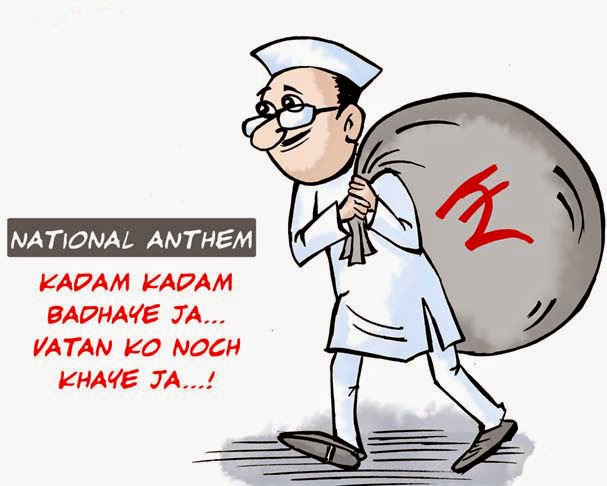.jpg)
In the third case, when the IAS officer is caught, then the inquiry of the matter will be made by a second IAS officer whom he/she will bribe, and thus the case will be ended as soon as it gets started.
So this is the state of our politicians in India.
Conclusion
Corruption exists throughout the world, but the percentage and depth seen in India are unparalleled. Government officials are appointed based on their qualifications and the trust that the general public has in them, particularly politicians who, rather than working for the welfare of the people, use their money for their own benefit. The government has also failed to provide necessities to the general public while enjoying luxuries paid for with money delivered and submitted by the people, regardless of how little or how much they own.

Such things cannot be turned into positive expectations in a single day or two; they require cooperation and action from all parties. On the one hand, officials must be held accountable for their actions and the ethics they uphold. They must understand their actual responsibilities and why that particular position of power was assigned to them, and they must work accordingly.





